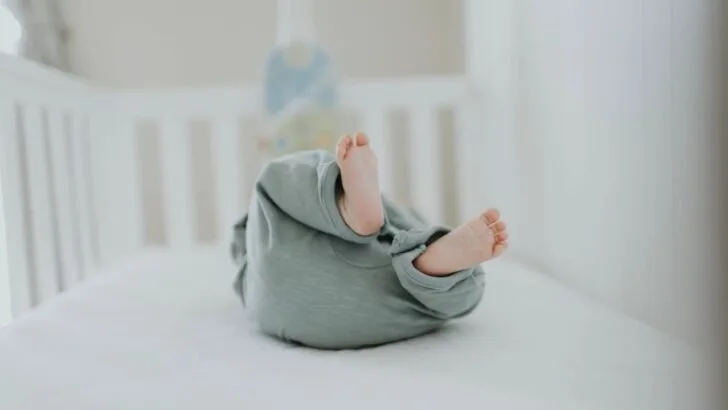I was lucky enough to inherit two cribs from my family, but I had a burning question: Do cribs expire?
Safety is always a top priority, and as our babies grow, so do our concerns about their well-being.
Let’s dive into this topic together, exploring when cribs expire, how to recognize the signs and other essential crib safety tips that every mom should know.
Do Cribs Expire?
The short answer is yes, cribs do have an expiration date, but it’s not an actual expiration date like you find with car seats.
When it comes to cribs, the “expiration date” is more about evolving safety standards and the integrity of the crib.
Over the years, crib safety standards have evolved to ensure the utmost protection for our precious bundles of joy, and a lot of important safety measures were put into effect in 2011.
So, of course, wood doesn’t really expire, but if your crib doesn’t meet safety standards, you could basically say it’s expired.
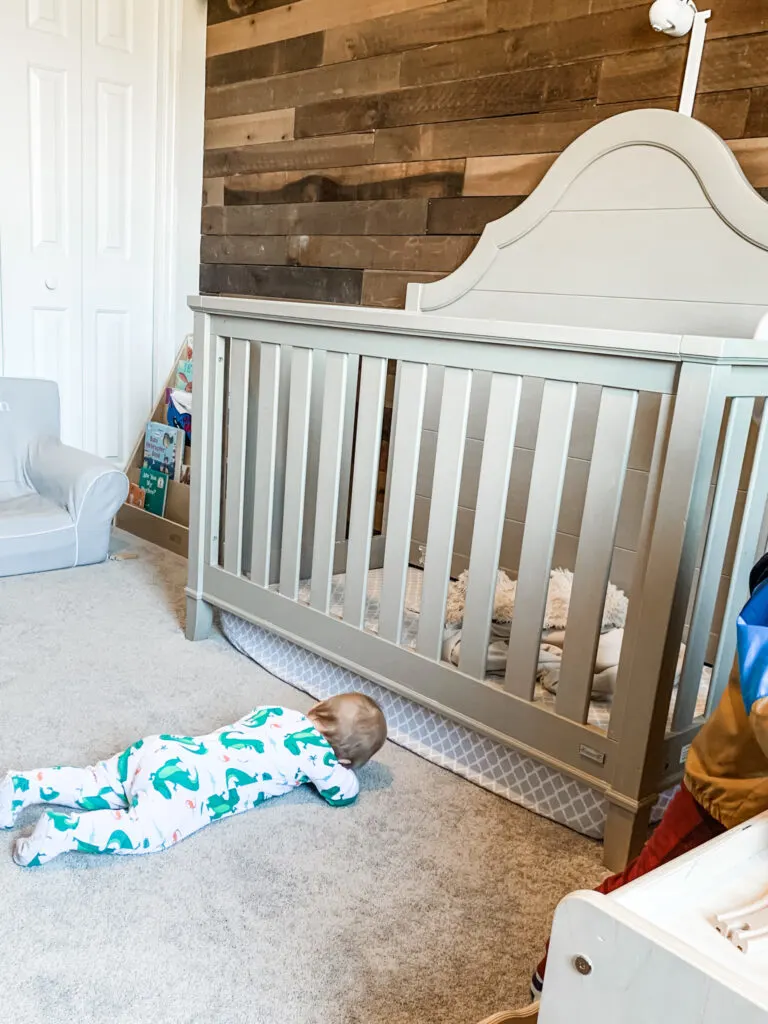
When Do Cribs Expire?
Typically, most cribs are designed to last about 10 years, though most companies only warranty their crib for up to a year.
As cribs age, wear and tear can occur, which might compromise their structural integrity. Components like screws, bolts, and slats might weaken over time, making the crib less stable.
Related: Crib Weight Limits: Can I Get In My Baby’s Crib?
Why Do Cribs Expire?
As safety standards evolve over time, older cribs may not meet the latest regulations designed to protect infants from potential hazards.
Structural wear and tear, like loosened joints or weakened materials, can occur over years of use, compromising the crib’s stability.
While cribs don’t typically have a listed expiration date, most companies only warranty the parts or workmanship for one year. After that point, it’s important to inspect your crib regularly for signs of damaged parts or loose joints.
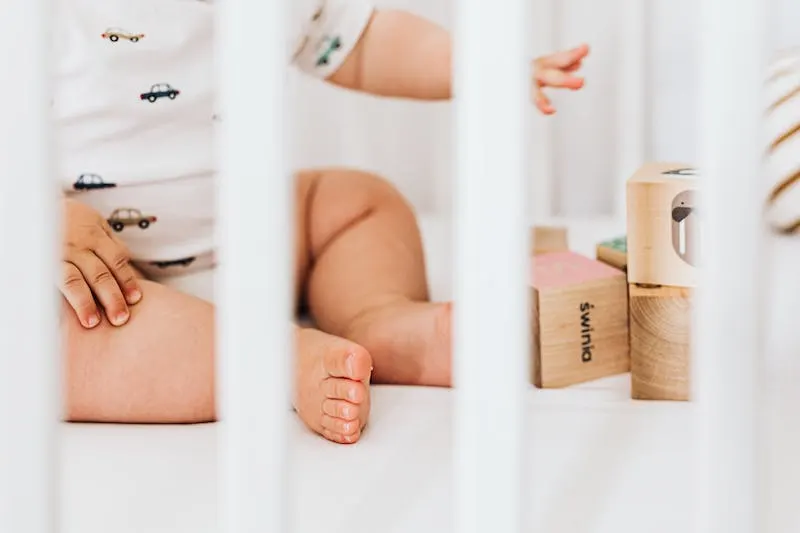
How to Know When to Replace Your Crib
Now that we know cribs have a shelf life, the next question is, how do we know when it’s time to replace our little one’s sanctuary?
Here are a few signs to watch out for:
1. Damaged Parts
Inspect the crib regularly for any broken or missing parts. If you notice cracked wood, bent metal, or chipped paint, it’s time to bid farewell to the crib.
2. Loose Joints
Shake the crib gently. If you notice that the crib wobbles or the joints are loose, it’s a clear sign that the crib’s structural integrity has been compromised.
3. Recalls
Stay informed about product recalls. If your crib model has been recalled, it’s essential to replace it immediately, as these recalls are often due to safety concerns.
4. Outgrown by Your Child
As your little one transitions from a crib to a toddler bed, it’s time to retire the crib. Climbing out of the crib is not only a sign that your baby is growing, but it also poses a safety hazard.
Related: Mini Crib vs Full Size Crib: Pros & Cons Explained
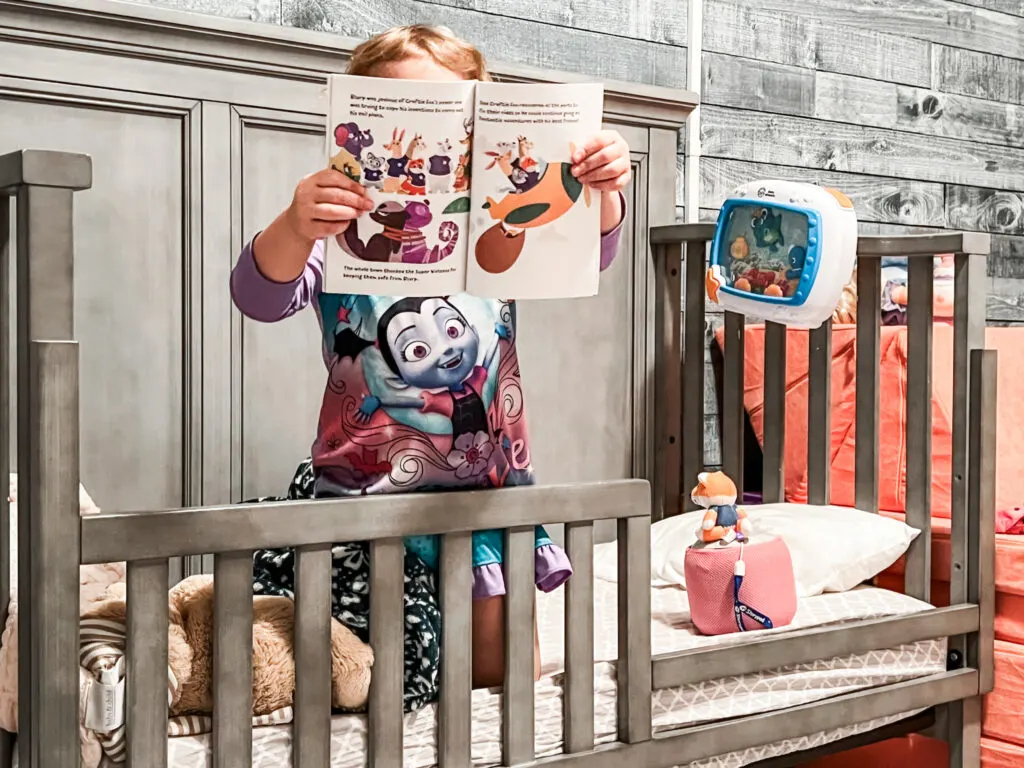
Signs You Need to Throw Your Crib Away
It can be tough to part with a piece of furniture that holds so many precious memories.
However, your child’s safety should always come first.
Here are some signs that indicate it’s time to bid farewell to the crib:
1. Excessive Wear and Tear
If the crib has endured several siblings or shows signs of extensive wear and tear, it’s best to replace it. Your baby deserves a safe and secure sleeping environment.
2. Missing Safety Standards
If your crib doesn’t meet the current safety standards, it’s time for an upgrade. Safety standards change to address new risks and challenges, so having an outdated crib – particularly one made before 2011 – might put your little one in harm’s way.
3. Hand-Me-Downs with an Unknown History
While hand-me-downs can save you money, they might not always be the safest option.
If you don’t know the crib’s history or it lacks proper safety documentation, it’s better to opt for a new crib that meets current safety standards.
Related: Top 8 Questions You Need to Ask Before Using a Crib Mattress in a Toddler Bed
Other Crib Safety Tips
Now that we’ve covered when and why cribs expire let’s discuss some other essential crib safety tips to ensure your baby sleeps peacefully and securely:
1. Use a Firm Mattress
Choose a firm mattress that fits snugly within the crib frame. A soft mattress increases the risk of suffocation, so opt for one specifically designed for infants.

2. Avoid Crib Bumpers
Cute crib bumpers might seem like a charming addition, but they pose a suffocation risk.
3. Keep Toys and Pillows Out
While a stuffed animal or fluffy pillow might look adorable in the crib, they can be hazardous.
Babies can suffocate on these items, so it’s best to keep the crib bare and clutter-free.
4. Position the Crib Carefully
Place the crib away from windows, blinds, or curtains.
Your curious little explorer might reach out and get entangled in cords, which can be extremely dangerous.
5. Regularly Check for Recalls
Stay updated on recalls related to your crib or any crib accessories.
Regularly checking for recalls ensures you’re aware of potential safety issues and can take necessary actions promptly.
6. Monitor Temperature
Babies can’t regulate their body temperature as effectively as adults.
Make sure the room is at a comfortable temperature, and avoid overdressing your baby to prevent overheating. A ceiling fan can also help with air circulation.
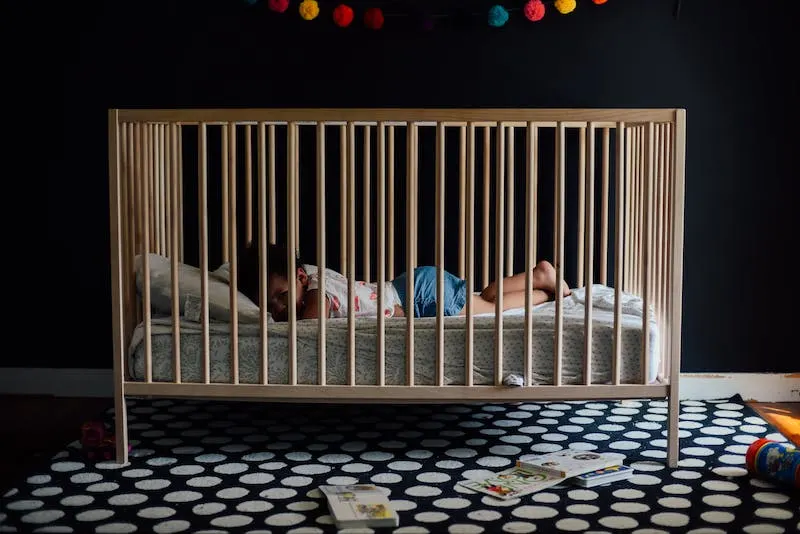
Do Cribs Expire? FAQs
Cribs made over a decade ago could have slats spaced too far apart, old-school lead-based paint, worn-out wood, or corners that aren’t as safe as they should be. It’s also important to not use any cribs made before 2011. On December 15, 2010, the U.S. Consumer Product Safety Commission (CPSC) approved new mandatory standards for full-size baby cribs (16 C.F.R. part 1219) and non-full-size baby cribs (16 C.F.R. part 1220). Those standards did not exist before then, so cribs made before that time are less likely to be safe today.
Regarding using old cribs, here’s the scoop: The U.S. Consumer Product Safety Commission (CPSC) says it’s a no-go for hand-me-down cribs that are over a decade old or ones that have been tinkered with. And, of course, broken cribs are a big no-no. Safety standards 10 years ago were nothing like they are now.
Replace your crib when it shows signs of damage, wear, or when it no longer meets current safety standards, which is typically around 10 years, or cribs that were made before 2011.
Do not use a crib that’s 20 years old. Safety standards tightened up significantly on December 15, 2010, so cribs made before then are much more likely to pose safety concerns. Many have even been recalled.
Do not use cribs that were manufactured in the 1990s. These were made before the CPSC enforced strict safety standards, ensuring cribs are as safe as possible.
Yes, you can reuse a crib for a second baby, but ensure it’s in good condition, not older than 10 years, and meets safety standards.
Using a crib from 30 years ago is not recommended, as it likely doesn’t meet modern safety standards. It’s safer to choose a newer crib that complies with current regulations.
A crib from 1989 probably does not meet current safety standards. It’s recommended to choose a newer crib that complies with modern safety regulations for your child’s safety.
A crib from 2014 may still be safe to use, but ensure it’s in good condition, not recalled, and meets current safety standards. Check for any potential issues before using it.
To ensure your crib is safe, check for recalls, ensure it meets current safety standards, has no missing or damaged parts, and has slats close enough together to prevent entrapment.
Homemade cribs are generally not recommended as they may lack the safety standards of commercially manufactured cribs, potentially posing risks to your baby. That said, if you or someone you know is a skilled woodworker, they may be able to make a crib that’s even sturdier and longer-lasting than anything you can buy in the store. Use discretion when deciding if a DIY crib is right for you and your baby.
Drop-side cribs are illegal due to safety concerns. They have a history of malfunctioning, leading to incidents where babies became trapped or fell, causing injuries or fatalities. To improve crib safety, regulations were changed, making drop-side cribs illegal.
Drop-side cribs were banned in the United States in 2011 to improve crib safety and reduce the risk of infant injuries and fatalities.
Cribs with bars, also known as slats, are safe when they meet current safety standards, have the correct spacing to prevent entrapment, and are in good condition. Proper assembly and maintenance are essential for crib safety.
Conclusion
As moms, our primary concern is the well-being of our children. Ensuring a safe sleep environment – and a crib that meets current safety standards – is a crucial step in parenting.
Remember, every child is unique, and while general guidelines are helpful, trust your instincts as a parent. If you have concerns about your crib, it’s probably time to toss it and get a new one.
Yasmin is a writer and mother of two young children. She is also the woman behind Two Mama Bears, a blog for parents with babies and toddlers.

